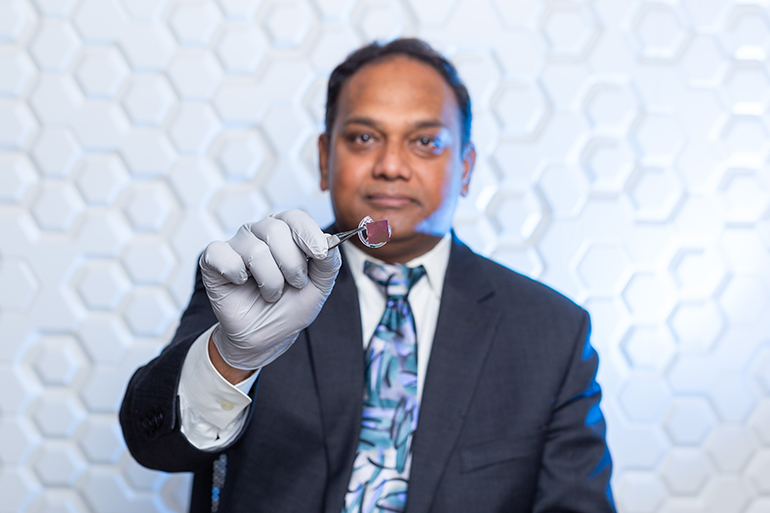Genetic modification offers tremendous potential in treating a wide variety of conditions, but the devil is in the details. Previously explored methods of introducing genes into cells, such as the use of viral vectors, have been fraught with safety concerns. Therefore, the potential of gene therapy has not yet been fully exploited. Advances in technology can provide us with safer, more effective ways to get genes into the body.
For this purpose, researchers at Indiana University have developed a silicon nanochip that can smuggle genetic material into the skin. The device is designed to perform tissue reprogramming in the skin to create desired cells and tissue structures, such as blood vessels to treat local ischemia or nerve cells to correct a neurological deficit caused by nerve damage. The chip is applied to the skin and drives the genetic material with an electrical charge through hollow microneedles into the tissue.

“This tiny silicon chip enables nanotechnology that can change the function of living parts of the body,” said Chandan Sen, a director of development for the new chip. “For example, if a person’s blood vessels have been damaged in a traffic accident and they need a blood supply, we can no longer rely on the blood vessels that are already there because they are squeezed, but we can turn the skin tissue into blood vessels and save the vulnerable limbs. ”
The electrical charge applied by the device creates nanopores in the cells of the treated skin, allowing genetic material to enter without viral vectors and avoiding all of the safety issues associated with viruses. The whole process only takes 30 minutes, and so far the researchers have tested the technology on mice and shown that it can affect gene expression in the treated skin.
In this latest article about the system, the researchers present standardized manufacturing techniques that enable the device to be manufactured in a reproducible manner. “This report on the precise manufacture of these tissue nanotransfection chips will enable other researchers to participate in this new development in regenerative medicine,” said Sen.
The technology can be useful in delivering a wide variety of drugs, including drugs and proteins, and so far researchers have suggested that it could deliver drugs to help improve bone growth, blood vessel formation, nerve growth, muscle growth, and even antitumor stimulate agents.
Here is a video from Indiana University about the new technology:
Study in nature protocols: Manufacture and use of silicon hollow needle arrays to achieve tissue nanotransfection in mouse tissue in vivo
Over: Indiana University
